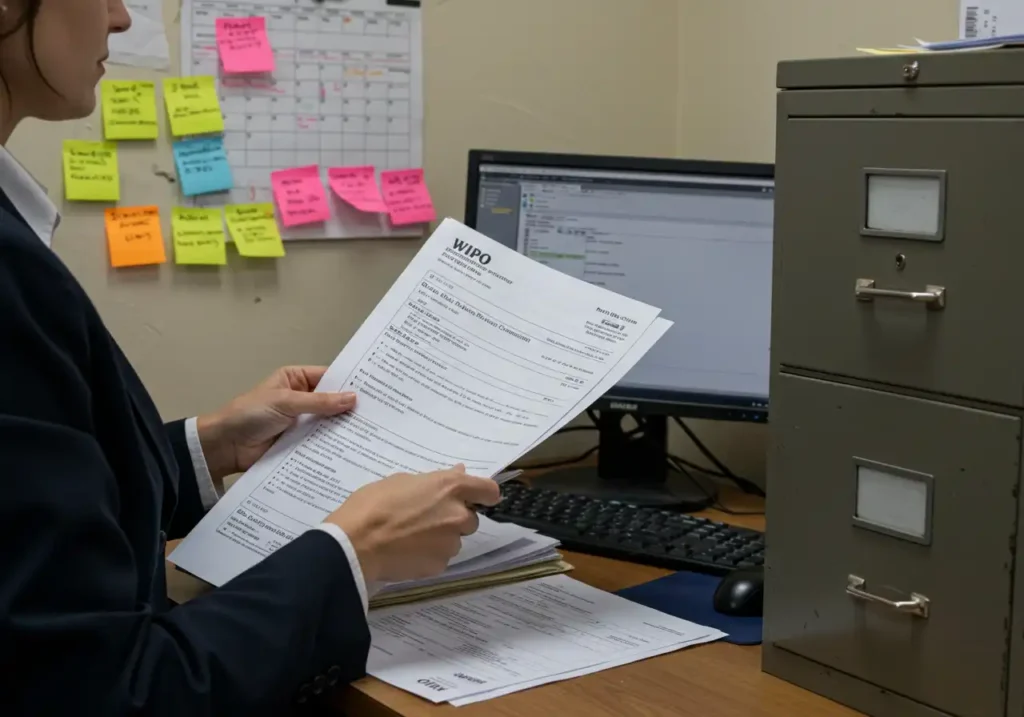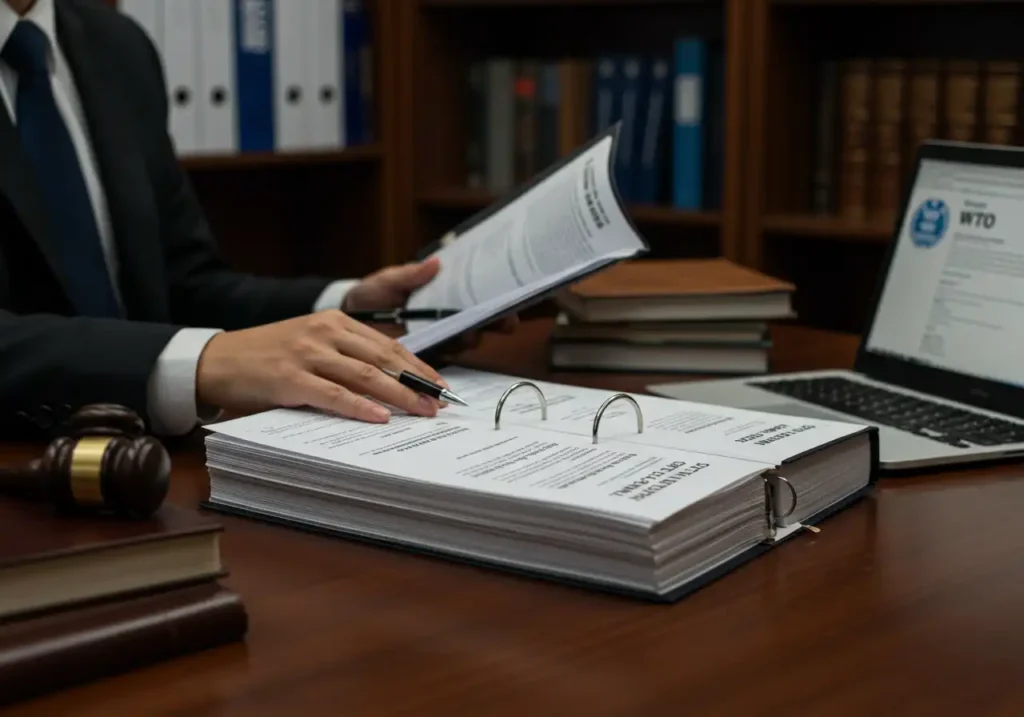Common Mistakes That Could Invalidate Your Patent (and How to Avoid Them)
Patents are important for protecting your intellectual property and making sure your innovations are legally safe. They give you exclusive rights to your invention, stopping others from using, selling, or making it without your permission. But getting a patent is not always easy, and there are many potential problems along the way.
This blog discusses the various errors that can put your patent’s validity at risk. These mistakes include timing issues, inadequate disclosure, incorrect claim scope, misunderstanding patentable subject matter, and more.
It’s crucial to avoid these mistakes in order to keep your patent strong and enforceable. Even a small mistake can result in rejection or invalidation during litigation, which would defeat the purpose of getting protection in the first place. By knowing about these common traps and taking proactive steps, you can ensure better patent protection for your inventions.
1. Timing Mistakes
Timing mistakes can severely jeopardize your patent’s validity. Here are common pitfalls:
- Waiting too long to file a patent application: Delaying the filing can lead to others filing similar patents first. This not only risks losing the novelty of your invention but also opens up the possibility of competitors gaining an advantage.
- Missing critical deadlines: Patent processes are time-sensitive. Missing deadlines for non-provisional patent applications or maintenance fee payments can result in the loss of your patent rights. Keeping track of these deadlines is crucial to maintaining protection.
- Risks associated with incomplete or poorly drafted applications: Filing an incomplete or poorly drafted application can weaken your patent protection. It may result in the loss of your earlier filing date, which is vital for establishing priority over similar inventions.
Engage a professional patent attorney to help navigate these timing challenges and ensure that your application is both timely and robust.
 2. Inadequate Disclosure
2. Inadequate Disclosure
Inadequate disclosure is one of the most common reasons for patent invalidation. Patent law demands that your application must include comprehensive details—enough for someone skilled in the relevant field to understand and reproduce your invention without undue experimentation. Missing critical elements, vague language, or skipping over essential steps signals a red flag to examiners and competitors alike.
- A patent lacking a robust technical description can be rejected outright or later challenged as unenforceable.
- Unclear drawings or missing diagrams make it impossible for others to understand how your invention works, which undermines the purpose of the patent system.
- The written description must fully support all claims, detailing how each element operates and interacts.
Example: Submitting a software patent with only high-level functional descriptions but without flowcharts, algorithms, or code snippets usually results in a rejection due to inadequate disclosure.
Precision in both narrative and visuals is not optional—it’s foundational for enforceability. When every detail is clear and complete, your patent stands on solid ground for both approval and future defense.
3. Incorrect Patent Claim Scope
An incorrect claim scope can significantly jeopardize your patent’s validity. Drafting claims that are too broad may seem advantageous, but it can lead to rejections or invalidations due to prior art or lack of specificity. On the other hand, claims that are too narrow might not offer adequate protection against infringement.
Key pitfalls include:
- Broad Claims: These may encompass existing technology or prior art, making your patent vulnerable.
- Narrow Claims: These limit your protection scope, potentially allowing competitors to design around your patent.
Improper claim language also plays a crucial role in patent validity. Ambiguous or vague terms can lead to misunderstandings and legal challenges during enforcement. Clear, precise, and well-defined claims are essential to establish the exact boundaries of your invention’s protection.
Addressing these issues involves drafting balanced claims with professional help to ensure robust and enforceable patents.
4. Misunderstanding Patentable Subject Matter
Patentable subject matter is a critical concept in the patent process. Many inventors make the mistake of attempting to patent non-patentable categories, which can quickly lead to rejection. Common non-patentable categories include:
- Natural phenomena: Discoveries of natural laws or naturally occurring substances.
- Laws of nature: Scientific principles or truths that exist independently of human action.
- Abstract ideas: Theories, mathematical methods, algorithms, and mental processes.
Understanding the complex rules for patentable subject matter helps avoid these pitfalls. For instance, while an abstract idea itself cannot be patented, a practical application of that idea might be eligible. Similarly, a naturally occurring substance is not patentable, but a new process to extract or synthesize it could be.
Navigating these nuances often requires professional guidance. Engaging a patent attorney who understands these subtleties ensures your invention falls within the bounds of what can legally be protected. This step is crucial for advancing through the patent process without unnecessary setbacks.
5. Lack of Prior Art Search
Conducting a thorough prior art search is crucial for determining the novelty and non-obviousness of your invention. This involves searching for existing patents, publications, and products that might impact your patent application.
Importance of Thorough Searches
- Identifying relevant prior art helps you understand the landscape of existing technologies.
- It ensures your invention is unique and has not already been disclosed in any form.
Consequences of Overlooking Prior Art
- Invalidation Risks: Failing to identify prior art can lead to patent invalidation if similar inventions are later discovered.
- Legal Complications: Overlooked prior art can cause legal disputes, making it difficult to defend your patent in litigation.
A comprehensive prior art search mitigates these risks, providing a solid foundation for a robust and defensible patent application.
6. Incorrect Inventorship
Incorrect inventorship is a common pitfall that can fatally damage a patent’s validity. The law requires that all true inventors—those who contributed to the conception of at least one claim—must be accurately identified in the application. Errors such as omitting a key contributor or including someone who did not contribute can invalidate the entire patent.
Risks associated with incorrect inventorship include:
- The patent may be declared unenforceable or invalid by courts if challenged.
- Disputes over ownership can arise, leading to costly litigation and lost licensing opportunities.
- Intentional misrepresentation may trigger allegations of fraud, exposing applicants to additional legal penalties.
Legal implications of inaccurate inventor identification:
- U.S. patent law is strict on this issue. If you omit a true inventor or name someone incorrectly, competitors can use this error as grounds to invalidate your patent during litigation.
- Correction after filing is possible but often complicated, especially if bad faith or intent to deceive is alleged.
Collaborate closely with all contributors before filing and seek legal advice when questions about inventorship arise. Accurate identification protects your rights and strengthens your position against future challenges.
7. Ignoring International Patent Considerations
Failing to address international patent protection can leave your invention vulnerable beyond your home country. If you only file domestically, competitors overseas can legally copy, use, or sell your invention in markets where you hold no rights.
Key benefits of securing international filings:
- Exclusive rights in target countries enable global business expansion and licensing opportunities.
- Barriers to entry for potential infringers in major markets such as the EU, China, or Japan.
- Increased valuation of your intellectual property portfolio when attracting investors or partners.
Risks of missing international filings:
- Public disclosure or an early domestic filing can trigger strict deadlines for foreign applications. Missing these windows means forfeiting rights abroad.
- Losing access to lucrative foreign markets due to unprotected inventions.
- The Patent Cooperation Treaty (PCT) offers a unified process for seeking protection in multiple countries but requires timely action.
Treat each market as a separate opportunity and risk. Ignoring global strategy jeopardizes both future profits and competitive advantage.
 8. Poor Patent Portfolio Management
8. Poor Patent Portfolio Management
Missing deadlines is one of the most common and costly mistakes in patent portfolio management. Each patent comes with a strict schedule for filings, responses to office actions, and—critically—maintenance fees. Ignoring even a single deadline can lead to irrevocable loss of rights or abandonment of valuable patents.
Consequences of missed deadlines:
- Automatic patent expiration: Failure to pay maintenance fees results in immediate loss of protection.
- Lost ownership: A lapsed patent may fall into the public domain, allowing competitors free use.
- Missed opportunities: Lapses can undermine licensing deals or infringement actions, weakening your position in negotiations.
- Costly reinstatement: Restoring patents after abandonment is expensive and not always possible.
Effective portfolio management requires reliable systems for tracking deadlines, clear internal communication, and regular audits. Some teams use specialized docketing software to automate reminders and manage global portfolios. Relying solely on manual tracking dramatically increases the risk of costly mistakes that could erode your IP assets.
9. Public Disclosure Before Filing
Public disclosure before filing a patent application can significantly jeopardize patent rights. You must understand the risks associated with revealing your invention to the public before securing a patent.
Key Risks:
- Loss of Novelty: Publicly disclosing your invention can destroy its novelty, making it ineligible for patent protection.
- Increased Competition: Once disclosed, competitors can capitalize on your idea, potentially developing similar products and filing patents before you do.
- Legal Complications: Demonstrating that the invention was not publicly disclosed prior to filing becomes difficult, complicating the legal process.
Examples of Public Disclosure:
- Presenting your invention at conferences or trade shows
- Publishing papers or articles describing the invention
- Posting details on websites or social media platforms
Preventative Measures:
To avoid these pitfalls, ensure all disclosures are confidential until a patent application is filed. Implementing non-disclosure agreements (NDAs) when discussing your invention with potential partners or investors is crucial.
By avoiding premature public disclosure, you protect the novelty and integrity of your invention, thus safeguarding your patent rights.
 10. Employer Ownership Issues
10. Employer Ownership Issues
Employer ownership issues can create significant complications in patent rights, especially when assignment agreements are unclear or nonexistent.
Implications of Unclear Assignment Agreements
Without clear assignment agreements, it becomes challenging to determine who owns the rights to an invention developed by an employee.
Employers might assume they automatically own inventions created during employment, but this is not always legally binding without explicit agreements.
Disputes over ownership can arise, leading to costly legal battles and potential patent invalidation.
Importance of Clear Assignment Agreements
Clearly defined assignment agreements ensure that all parties understand who holds the patent rights.
These agreements should be part of the employment contract and explicitly state that any inventions developed during employment belong to the employer.
Properly executed assignments help prevent future conflicts and secure the employer’s claim over the patent.
Ignoring these aspects can jeopardize ownership rights and lead to loss of valuable intellectual property. Ensuring clear and precise assignment agreements is crucial for maintaining robust patent protection.
Conclusion
Understanding the common mistakes that could invalidate your patent is crucial for securing robust intellectual property protection. By taking proactive measures to avoid these pitfalls, you enhance the likelihood of obtaining a valid and enforceable patent.
Key strategies for avoiding patent mistakes include:
- Filing timely and complete applications: Ensure your patent application is comprehensive and submitted promptly to meet all relevant deadlines.
- Conducting thorough prior art searches: Invest in detailed searches to identify existing patents and publications that could impact your invention’s novelty.
- Providing adequate disclosures: Offer detailed technical descriptions and clear drawings to support the full scope of your invention.
- Crafting precise claims: Balance the breadth and specificity of your claims to protect your invention while ensuring compliance with legal standards.
- Understanding patentable subject matter: Familiarize yourself with what can and cannot be patented under current laws.
- Accurate inventorship identification: Properly list all true inventors to avoid legal complications and potential invalidation.
- Considering international protections: Evaluate the need for global patent filings to safeguard your invention beyond domestic borders.
- Maintaining proper portfolio management: Keep track of filing deadlines, maintenance fees, and other key dates to prevent abandonment.
By diligently addressing these areas, you can significantly reduce the risk of invalidating your patent and secure stronger protection for your innovative efforts.

 2. Inadequate Disclosure
2. Inadequate Disclosure 8. Poor Patent Portfolio Management
8. Poor Patent Portfolio Management 10. Employer Ownership Issues
10. Employer Ownership Issues